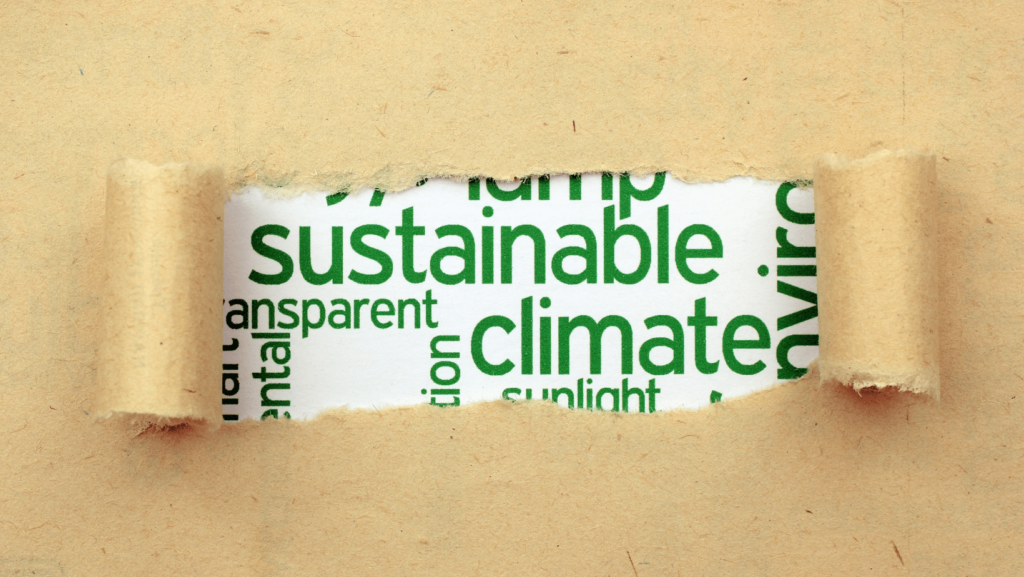What Is Sustainability? A 1st Comprehensive Guide to Building a Greener Future
July 24, 2023 | by usasustainableupdates.com

What Is Sustainability? In today’s rapidly evolving world, sustainability has become a critical concept to ensure the well-being of both our planet and future generations. Sustainability refers to the ability to meet the needs of the present without compromising the ability of future generations to meet their own needs. It involves balancing environmental, social, and economic factors to create a harmonious and thriving world.
The Three Pillars of Sustainability
Sustainability rests on three main pillars calls The Triple Bottom Line:
Environmental Sustainability
Environmental sustainability focuses on preserving the delicate balance of nature. It emphasizes the conservation of resources, reduction of pollution, and the adoption of practices that minimize harm to ecosystems.
Social Sustainability
Social sustainability concerns the well-being of society as a whole. This pillar advocates for fair and just living conditions, equal opportunities, and inclusive communities.
Economic Sustainability
Economic sustainability aims to maintain a stable and prosperous economy without depleting resources or exploiting labor. It involves responsible business practices and financial planning for the long term.

Sustainable Development Goals (SDGs)
The Sustainable Development Goals, established by the United Nations, provide a global blueprint for achieving a sustainable future. The 17 SDGs address various issues, including poverty, hunger, education, gender equality, clean energy, and climate action.
The SDGs play a vital role in promoting sustainability by guiding governments, organizations, and individuals to take specific actions that contribute to positive change.
Environmental Impact of Unsustainable Practices
Unsustainable practices have severe consequences for the environment, leading to ecological imbalances and climate change. Some of the most pressing issues include:
Climate Change
The emission of greenhouse gases, primarily from burning fossil fuels, contributes to global warming, resulting in extreme weather events and rising sea levels.
Deforestation
Massive deforestation for agriculture, logging, and urbanization destroys vital habitats and reduces the planet’s ability to absorb carbon dioxide.
Pollution
Air, water, and soil pollution from industrial activities and improper waste disposal harm both ecosystems and human health.

Steps Towards a Sustainable Future
Creating a sustainable future requires collective efforts and innovative solutions. Some key steps include:
Renewable Energy Sources
Transitioning from fossil fuels to renewable energy sources, such as solar, wind, and hydropower, reduces greenhouse gas emissions and promotes cleaner energy alternatives.
Waste Reduction and Recycling
Implementing effective waste management strategies, including recycling and composting, minimizes the environmental impact of waste disposal.
Conservation of Resources
Using resources efficiently and responsibly ensures their availability for future generations.
Sustainable Business Practices
Businesses play a significant role in driving sustainability. Embracing sustainable practices not only benefits the environment but also enhances brand reputation and attracts environmentally conscious consumers.
Corporate Social Responsibility
Companies should integrate social and environmental concerns into their business operations and contribute positively to the communities they serve.
Green Initiatives
Investing in eco-friendly technologies and practices helps businesses reduce their carbon footprint and environmental impact.
The Role of Individuals in Sustainability
Every individual has the power to make a difference in promoting sustainability. Adopting sustainable lifestyle choices can significantly contribute to a better world.
Sustainable Lifestyle Choices
Simple actions like conserving energy, reducing waste, and choosing eco-friendly products make a collective impact on the environment.
Consumer Responsibility
Supporting companies that prioritize sustainability encourages others to follow suit and helps drive positive change.

Sustainable Agriculture
Agriculture plays a crucial role in sustainable development. Sustainable agricultural practices protect ecosystems and ensure food security for the future.
Organic Farming
Organic farming eliminates the use of harmful chemicals, promoting healthier soils and safer food products.
Importance of Biodiversity
Preserving biodiversity is essential for maintaining balanced ecosystems and securing the planet’s natural resilience.
Challenges in Achieving Sustainability
Despite the growing awareness of sustainability, there are challenges to overcome.
Political Barriers
Political will and international cooperation are necessary to implement effective sustainability policies.
Economic Challenges
Transitioning to sustainable practices may require initial investments, which can be a barrier for some industries and regions.
Sustainable Cities and Infrastructure
Designing sustainable cities and infrastructure is essential for accommodating the growing global population while minimizing environmental impact.
Smart City Concepts
Incorporating technology and data-driven solutions can optimize resource management and enhance urban living.
Sustainable Urban Planning
Planning cities with green spaces, efficient public transport, and energy-efficient buildings fosters sustainable communities.
Sustainable Transportation
Transportation is a significant contributor to carbon emissions, making sustainable solutions crucial.
Electric Vehicles
Adopting electric vehicles and expanding charging infrastructure reduces reliance on fossil fuels.
Public Transportation
Promoting public transportation options encourages eco-friendly commuting and reduces traffic congestion.

Education and Awareness on Sustainability
Education is a powerful tool for driving change and cultivating a sustainable mindset.
Importance of Education
Raising awareness about sustainability at all levels of education creates environmentally conscious citizens.
Promoting Awareness Campaigns
Public awareness campaigns can inspire action and mobilize communities to address sustainability challenges.
The Impact of Sustainable Choices
Embracing sustainability has numerous positive outcomes for the environment and future generations.
Positive Outcomes on the Environment
Preserving ecosystems and reducing pollution contribute to a healthier planet.
Benefits for Future Generations
Sustainable practices ensure that resources will be available for future generations to thrive.
Misconceptions About Sustainability
Addressing common misconceptions is vital for promoting accurate information and encouraging widespread adoption of sustainable practices.
Clarifying Common Myths
Dispelling misunderstandings about sustainability helps individuals make informed choices.
Dispelling Misconceptions
Addressing doubts about the feasibility and impact of sustainable practices fosters greater understanding.
Conclusion
Sustainability is more than a buzzword; it is a fundamental principle that shapes the future of our planet. By taking meaningful steps towards sustainability, we can safeguard the environment, uplift communities, and create a better world for generations to come.
Get Access Now: https://bit.ly/J_Umma
FAQs About Sustainability
- What is the definition of sustainability? Sustainability refers to the ability to meet present needs without compromising the ability of future generations to meet their own needs.
- What are the three pillars of sustainability? The three pillars of sustainability are environmental, social, and economic sustainability.
- What are the Sustainable Development Goals (SDGs)? The SDGs are a set of 17 global goals established by the United Nations to address various social, economic, and environmental issues.
- How can individuals contribute to sustainability? Individuals can contribute to sustainability by adopting sustainable lifestyle choices and supporting eco-friendly businesses.
- What are some challenges in achieving sustainability? Some challenges include political barriers and economic constraints in transitioning to sustainable practices.
- Why is sustainability important for the environment? Sustainability is vital for the environment because it helps preserve ecosystems, reduces pollution, and mitigates the impacts of climate change, ensuring a healthier planet for future generations.
- What are some examples of sustainable business practices? Sustainable business practices include implementing energy-efficient technologies, promoting recycling programs, supporting fair labor practices, and engaging in philanthropic initiatives.
- How does sustainable agriculture benefit farmers? Sustainable agriculture benefits farmers by promoting soil health, reducing the need for harmful pesticides, and increasing resilience to environmental challenges, leading to better crop yields and long-term profitability.
- What role does renewable energy play in achieving sustainability? Renewable energy sources, such as solar, wind, and hydroelectric power, play a crucial role in achieving sustainability as they produce clean energy without depleting finite resources or emitting greenhouse gases.
- How can governments support sustainability initiatives? Governments can support sustainability initiatives through policy development, offering incentives for green technologies, investing in sustainable infrastructure, and promoting public awareness campaigns.
- What are some examples of sustainable transportation alternatives? Sustainable transportation alternatives include cycling, walking, carpooling, and using public transportation, all of which reduce carbon emissions and promote greener commuting options.
- How can individuals encourage sustainability in their communities? Individuals can encourage sustainability in their communities by organizing local clean-up events, supporting eco-conscious businesses, advocating for sustainable policies, and participating in environmental education initiatives.
- What are the benefits of sustainable architecture and green building design? Sustainable architecture and green building design offer benefits such as reduced energy consumption, improved indoor air quality, lower operating costs, and a smaller ecological footprint.
- How does sustainable consumption impact the fashion industry? Sustainable consumption in the fashion industry involves buying fewer but higher-quality and ethically-produced garments, leading to reduced waste, lower demand for fast fashion, and improved working conditions for garment workers.
- What role do renewable resources play in promoting sustainable living? Renewable resources, such as solar energy, wind power, and geothermal energy, provide sustainable alternatives to finite fossil fuels, decreasing greenhouse gas emissions and supporting a more environmentally-friendly lifestyle.
- What are the benefits of sustainable packaging? Sustainable packaging reduces waste, minimizes the use of harmful materials, and lowers the carbon footprint, leading to a more eco-friendly and responsible approach to product packaging.
- How does sustainable tourism contribute to conservation efforts? Sustainable tourism practices prioritize the preservation of natural and cultural resources, supporting local communities and wildlife conservation while minimizing negative impacts on the environment.
- What is the role of sustainable finance in achieving global sustainability goals? Sustainable finance involves investing in projects and companies that prioritize environmental and social responsibility, contributing to the funding of initiatives aligned with global sustainability goals, such as the SDGs.
- Why is biodiversity essential for sustainable ecosystems? Biodiversity ensures ecological balance by enhancing ecosystem resilience, supporting food chains, and providing valuable genetic resources that help species adapt to changing environments.
- How can educational institutions promote sustainability among students? Educational institutions can promote sustainability by integrating environmental education into their curricula, establishing green campus initiatives, and encouraging students to engage in sustainability-related research and projects.
- How does sustainable water management contribute to a greener future? Sustainable water management involves efficient water use, conservation, and wastewater treatment, reducing water scarcity and ensuring the availability of clean water for future generations.
- What is the concept of circular economy, and how does it promote sustainability? The circular economy aims to minimize waste by designing products for reuse, recycling materials, and extending product lifecycles, reducing resource consumption and environmental impact.
- Why is ethical sourcing essential for sustainable supply chains? Ethical sourcing ensures that products are made in an environmentally responsible and socially conscious manner, promoting fair labor practices and reducing the environmental footprint of supply chains.
- How can technology contribute to sustainability efforts? Technology plays a crucial role in sustainability by enabling innovations in renewable energy, resource efficiency, smart infrastructure, and data-driven solutions for better environmental management.
- What are the long-term benefits of investing in sustainability for businesses? Businesses that invest in sustainability often experience increased brand loyalty, improved reputation, cost savings through energy efficiency, and access to new markets driven by environmentally-conscious consumers.
- What is the definition of sustainability? Sustainability refers to the ability to meet the needs of the present without compromising the ability of future generations to meet their own needs.
- Why is sustainability important for the environment? Sustainability is vital for the environment because it helps preserve ecosystems, reduces pollution, and mitigates the impacts of climate change, ensuring a healthier planet for future generations.
- How does sustainability benefit society? Sustainability promotes social equity, inclusivity, and improved quality of life by addressing issues such as poverty, education, and healthcare, ensuring a better future for all.
- What role does sustainability play in business and the economy? Sustainability is increasingly crucial for businesses as it enhances brand reputation, attracts socially responsible consumers, and fosters long-term profitability through efficient resource use.
- How can individuals contribute to sustainability? Individuals can contribute to sustainability by adopting sustainable lifestyle choices and supporting eco-friendly businesses, driving positive change in their daily lives.
- What are some key challenges in achieving sustainability? Challenges in achieving sustainability include political barriers, economic constraints, and the need for global cooperation to address complex environmental issues.
- What are the Sustainable Development Goals (SDGs)? The SDGs are a set of 17 global goals established by the United Nations to address various social, economic, and environmental issues and drive sustainable development worldwide.
- How does sustainable agriculture impact food security? Sustainable agriculture practices ensure food security by promoting efficient resource use, preserving soil health, and reducing the environmental impact of farming.
- What are some innovative technologies driving sustainability efforts? Technologies like renewable energy sources, smart grid systems, and sustainable transportation solutions play a crucial role in advancing sustainability initiatives.
- What is the role of education in promoting sustainability? Education is essential in raising awareness about sustainability issues, empowering individuals to make informed decisions, and inspiring future leaders in sustainable practices.
for more information you can visit our Blog, Thanks for reading.

RELATED POSTS
View all



